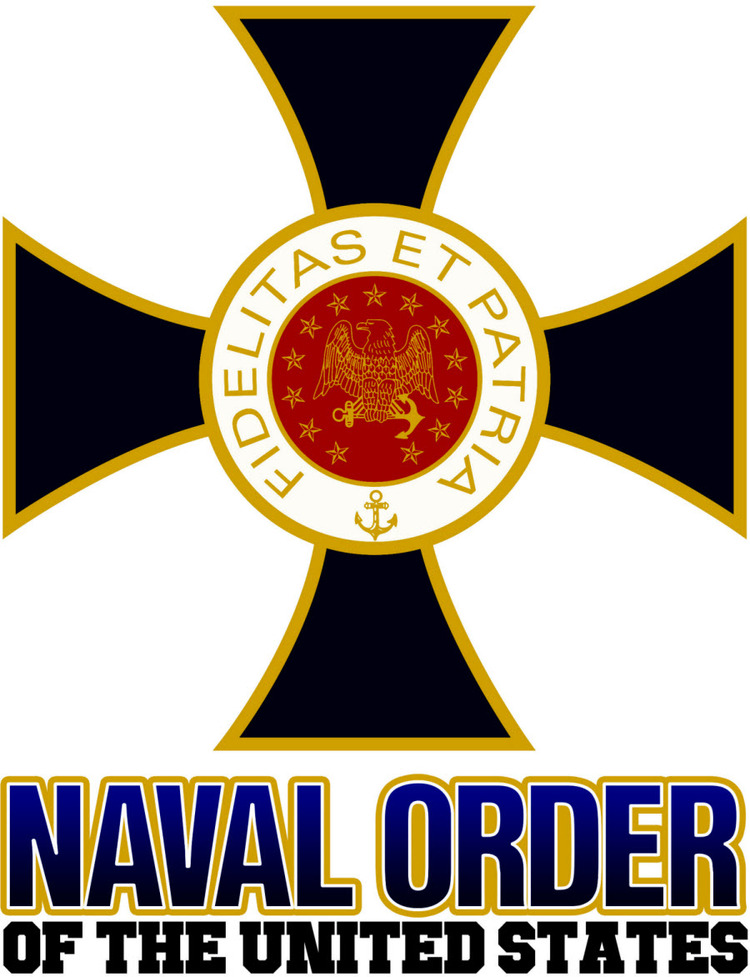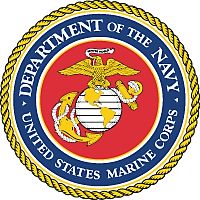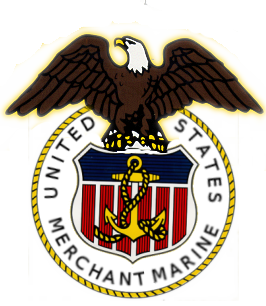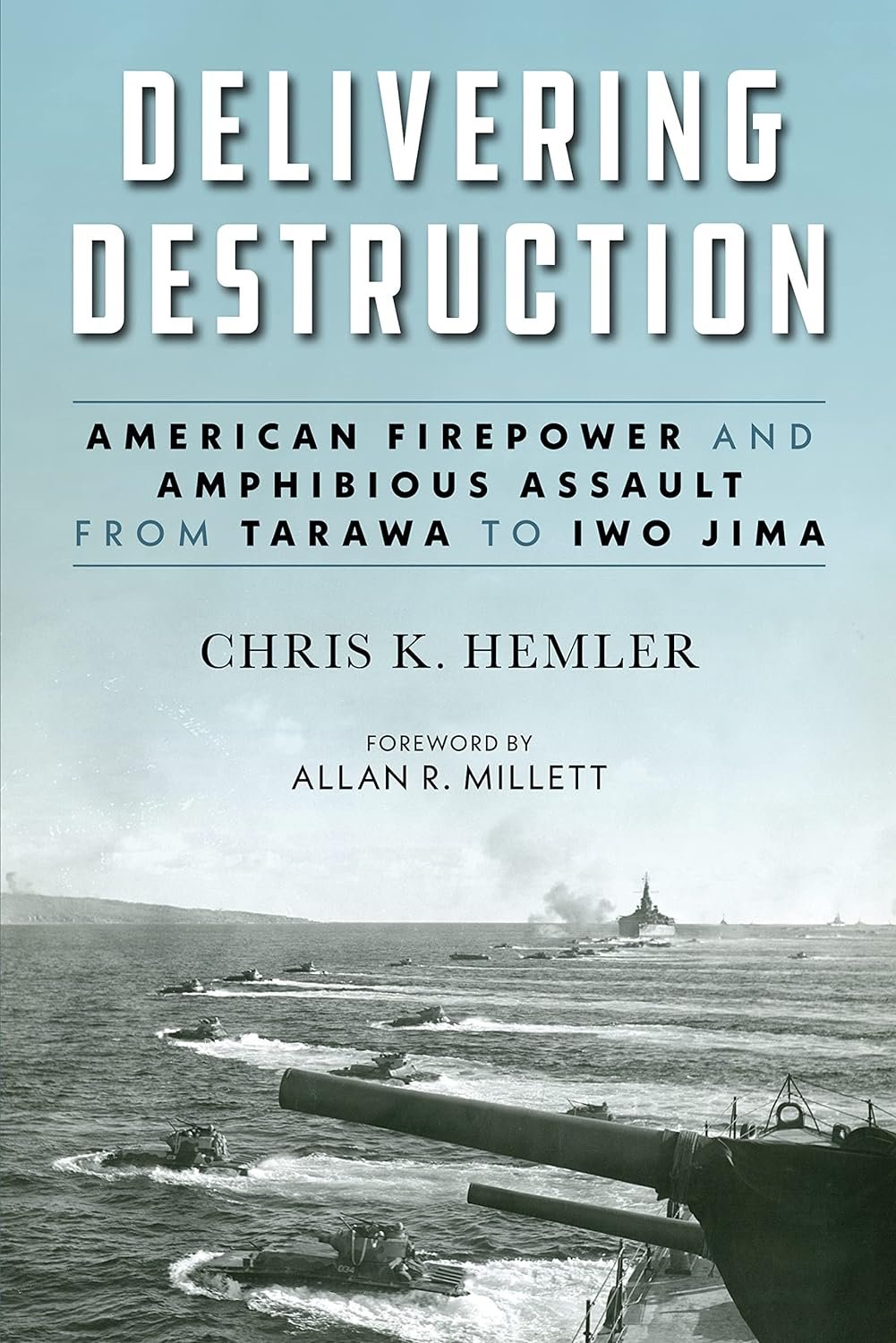Delivering Destruction: American Firepower and Amphibious Assault from Tarawa to Iwo Jima
Medium Used:
Rating:
Released: October 15, 2023
Publisher: Naval Institute Press
Chris K. Hemler served as a Marine Corps officer. In 2019, he was awarded the General Lemuel Shepherd Memorial Dissertation Fellowship and Rear Admiral Samuel Eliot Morison Scholarship. He holds a Ph.D. in Military History from Texas A&M University. His dissertation, Learning Triphibious War: American Fire Control and Coordination in The Pacific War, is the basis for this book.
Historians often reflect that generals and flag officers planned to fight the last war. This could not be further from the truth during the period between World I and World War II when flag officers in both the Navy and the Marine Corps tested new theories and developed new equipment needed to fight the amphibious war in the Pacific after Pearl Harbor. Hemler points out how the services balanced fleet operations with reduced depression-era manning to conduct Fleet Exercises (FLEXs) between 1935 and 1941. These exercises would begin the learning process; however, Hemler points out that both Navy and Marine officers were often over-cautious and focused on their “individual tasks.” Hemler argues, “Between the war years, very few American officers - either Navy or Marine - anticipated the inherent complexity and difficulty of triphibious coordination, integration, and flexibility. None of these words seemed worthy of their close attention or concern…Tragically, this combination of ignorance and insufficient attention left the Americans categorically unprepared at the outbreak of war.”
Through the next chapters, Hemler uses government documents and publications, oral histories and memoirs, professional articles, and news stories to show how the Navy and Marine Corps leaders moved past the failures encountered at the first major engagement with the Japanese on the island of Tarawa in 1943. Although training was conducted off the coast of California, and some issues were evident, they did not rise to the level to get the attention of senior leaders.
Hemler points out that the significant issues the Navy and Marine Corps encountered when the Marines landed on the island of Benito in the Tarawa Atoll likely could have been averted with proper coordination and training before the invasion. For example, “no air-ground liaison was 'attempted' during the California exercises because no teams were available.” Others argued that the units were, in fact, well-trained in their own areas of expertise but lacked the proficiency to work in a coordinated air, ground, and sea invasion. Hemler quotes Navy Lieutenant R. D. Hunt, “(our) modern fire control system is designed for naval combat involving 'battle at sea' rather than in support of an infantry landing.” Each consequent landing improved the combat effectiveness of the invasion force with better communications, coordination by dedicated command and control teams, and the flexibility to react to the battle rhythm as it changes.
In late 1943, the Navy and Marine Corps developed the Joint Assault Signal Company, which would be the basis for the incremental improvements made with each operation. Hemler explains that Maj. Gen Alexander Vandegrift encouraged the Joint Chiefs of Staff to support the JASCO construct, bringing the air, sea, and ground elements together under a unified heading. This single element would be key to Admiral Chester Nimitz’s island-hopping strategy towards Japan.
Hemler explains how each idea was essential in achieving the final victory over Japan. For example, as the fleet exercised on target ranges in California before the invasion of Tarawa, Nimitz saw the need to have a training area closer to the fight and ordered that a firing range be located in the Pacific Theater. Kahoolawe Island, a remote island in the Hawaiian chain, was where Nimitz envisioned the fleet could train as if it were in America’s home waters. It would not only be a firing range but would also be where JASCO teams were formed and trained. It would soon be known as the most shelled island in the Pacific.
Hemler writes that the Navy and Marine Corps Team's invasion of Iwo Jima would perfect the lessons learned in the previous invasions. Delivering Destruction is well-written and an enjoyable read. I highly recommend it to anyone interested in naval history, strategy, and tactics.
Author: Chris K. Hemler
Reviewer: David A. Mattingly, Deputy Commander of the National Capital Commandery.
ISCM (AW) David Mattingly served over thirty years as an intelligence specialist in fleet and joint commands. After retiring from the Navy, he continued to work in the U.S. Intelligence Community. He volunteers as a docent and educator at the National Museum of the Marine Corps at Quantico, VA.







